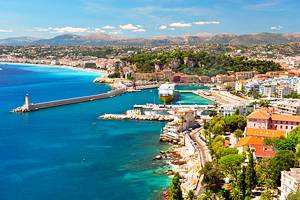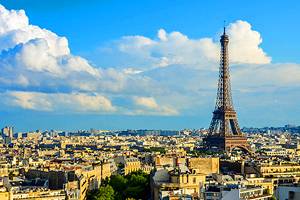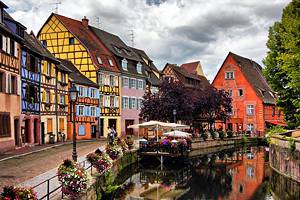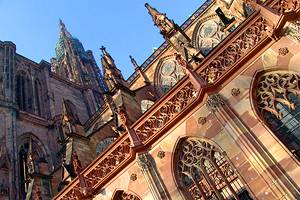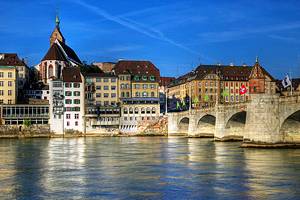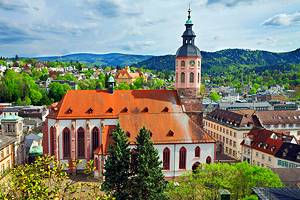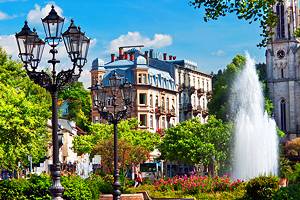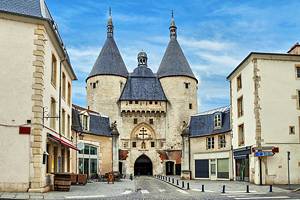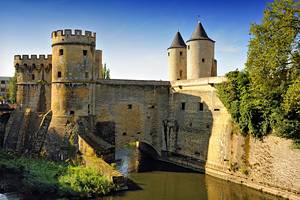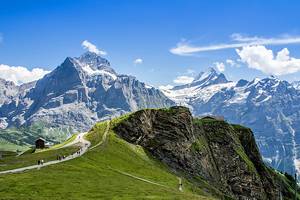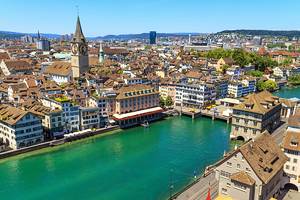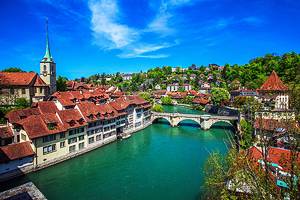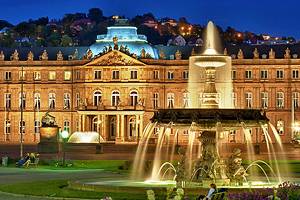Alsace Villages & Medieval Towns
Author Lisa Alexander spent two years living in France and has traveled the country extensively.
A delightful way to explore France's Alsace region is by traveling through the picturesque foothills of the Vosges Mountains and along the Rhine plain. Driving allows tourists to discover the bucolic landscape and stop in towns and villages at their leisure.
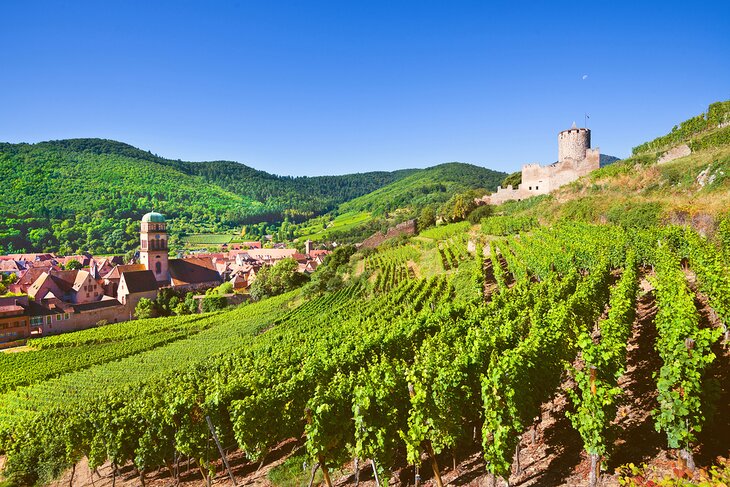
The route generally runs parallel to the meandering Rhine River from Molsheim (26 kilometers west of Strasbourg), and continues south for about 60 kilometers until reaching the historic town of Colmar.
A north-south itinerary follows in this order: Molsheim, Rosheim, Obernai, Mittelbergheim, Andlau, Dambach-la-Ville, Sélestat, Bergheim, Ribeauvillé, Hunawihr, Riquewihr, Kaysersberg, Colmar. South of Colmar is the village of Eguisheim, the town of Turckheim, the Vallée de Munster, the town of Guebwiller, and the Château du Haut-Koenigsbourg.
The itinerary leads to adorable little hamlets, charming country villages, and exquisitely preserved medieval towns, where colorful potted flowers burst from the windowsills of pastel-painted half-timbered houses, and narrow cobblestone lanes invite pleasant strolls that feel like stepping back in time.
Learn about the best places to visit in this beautiful region with our list of the top Alsace villages and medieval towns.
Colmar
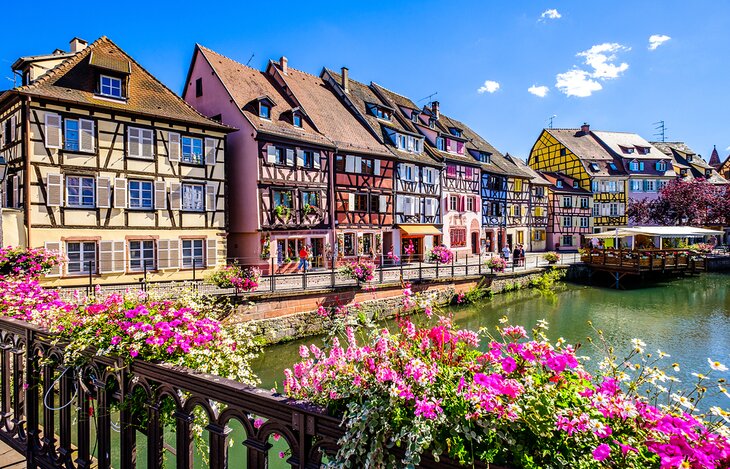
The picture-perfect beauty of Colmar belies its importance as a center of culture since the 13th century (especially during the Protestant Reformation in the 16th century). With its historic neighborhoods, winding pedestrian streets, and atmospheric canals, Colmar has retained the enchantment of a bygone era.
Typical of the region, the city's dainty half-timbered houses have balconies adorned with potted geraniums, which bloom in spring and summer. Colmar has earned the distinction of a "Ville Fleurie" (Flowering City) because of its vibrant floral displays.
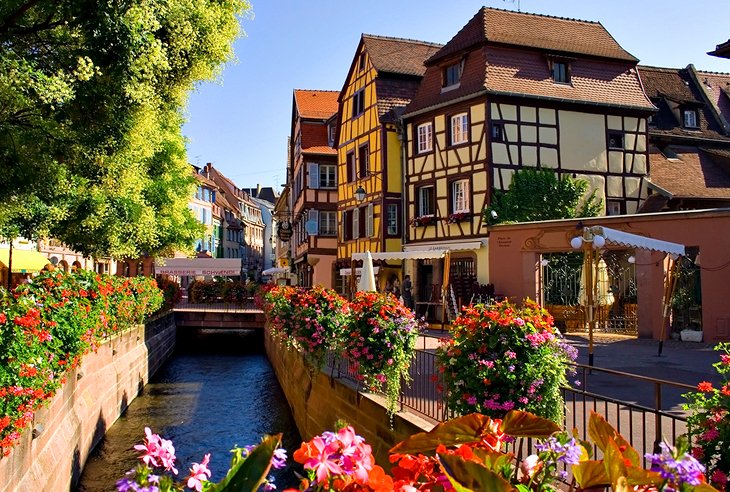
This quintessential Alsatian town is brimming with old-world atmosphere, especially in the Krutenau Quarter. Also known as "Little Venice," this quarter is where tourists can embark on a boat tour around the canals.
Throughout the historic center of town, tourists will come across magnificent architecture such as La Maison des Têtes, a splendid Renaissance mansion that is now a five-star Relais & Châteaux hotel with a traditional Alsatian brasserie (the Brasserie Historique) and a Michelin-starred gastronomic restaurant (the Restaurant Girardin). The town center is also home to the Maison Pfister, one of the finest old 16th-century houses in the city.
To admire beautiful art, the Musée Unterlinden is an obligatory stop, while the Koïfhus (Old Customs House) gives an insight into Colmar's thriving commercial activity during the medieval era.
Riquewihr
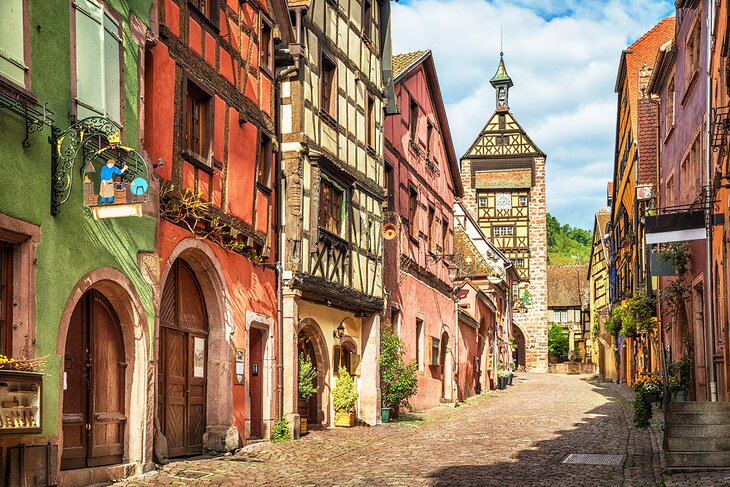
Tucked in between the crests of the Vosges Mountains and the expansive Alsace plain, Riquewihr is one of the "Plus Beaux Villages de France" (Most Beautiful Villages of France). From far away, with the church steeple rising above the village, Riquewihr looks like a drawing in a children's storybook.
Typical of Alsatian towns, Riquewihr has many historic half-timbered buildings embellished with flowering balconies. Adding to the charm, quaint cobblestone streets wind through the village and lead to small public squares adorned with fountains.
The main street of the village, the rue du Général-de-Gaulle, is a lovely place for a leisurely stroll. The rue du Général-de-Gaulle ends at the 13th-century Dolder gate tower, which was designed as an entry gate within the town's circuit of defensive walls.
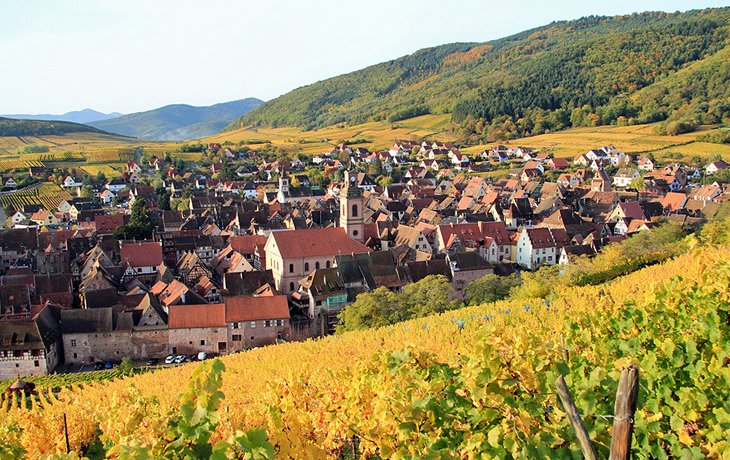
The Dolder Tower now houses the Musée du Dolder, a museum devoted to the history of Riquewihr from the 13th through 17th centuries. From the museum's top floor windows, visitors can admire sweeping views over the village rooftops and its bucolic surroundings. It's possible to see all the way to Germany, including the Black Forest in the distance.
Another tower built in the 13th century as part of the village ramparts, the Tour des Voleurs (Thieves' Tower) once served as a prison and now houses a museum. The Musée de la Tour des Voleurs (14 rue des Juifs) presents an eclectic mix of exhibits, including a historic collection of gruesome torture devices, and in the adjoining Maison de Vigneron, an assortment of furniture and interior décor from a 16th-century vineyard house.
For such a tiny village, there are plenty of cafés, bakeries, boutiques, and restaurants that appeal to the many tourists who visit throughout the year.
Obernai
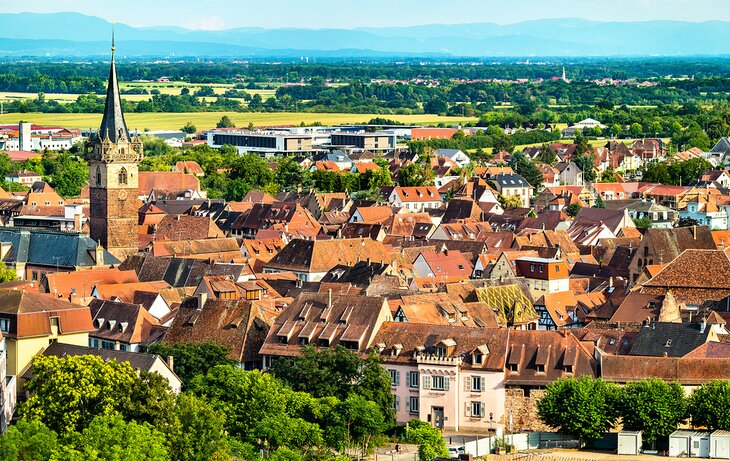
About 25 kilometers south of Strasbourg, this Free Imperial City of the Holy Roman Empire has retained its medieval ambience, seen in the 13th-century tower, old town gates, narrow pedestrian lanes, and characteristic burghers' houses.
The Place du Marché (Market Square) features Gothic and Renaissance houses, which lend an elegant air. On this picturesque cobblestone square stands the Hôtel de Ville (Town Hall), which dazzles onlookers with its ornate Neo-Renaissance façade.
A short walk away from the Place du Marché is the Office of Tourism on the Place Beffroi, which occupies a quaint half-timbered house bedecked with potted flowers. Nearby, in front of the Hôtel de la Cloche, is one of the most scenic spots in Obernai, the Puits aux Six Seaux (Six-Bucket Well), which dates to 1579.
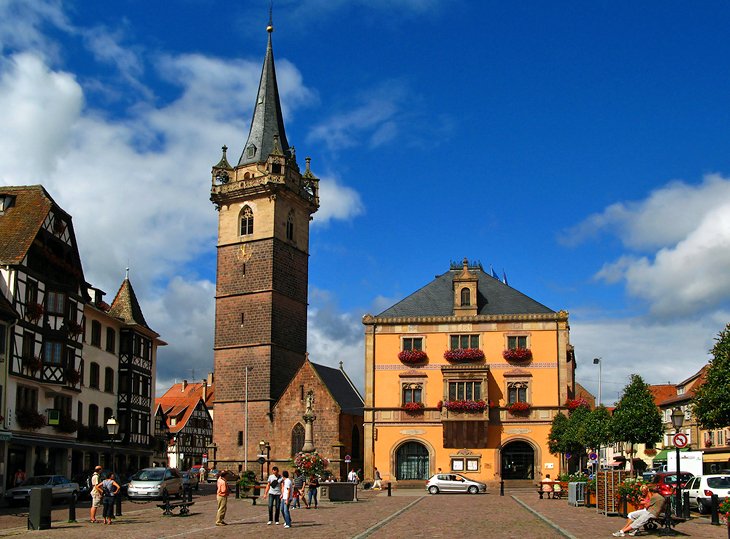
Tourists can walk a few blocks from the Puits aux Six Seaux to the Place de l'Étoile, a lovely square with angular half-timbered houses and storks' nests on the roofs.
One of the best times of year to visit Obernai is during the holiday season. Visitors will enjoy the convivial spirit of the town's quintessentially Alsatian Christmas celebration. A magnificent Christmas tree and magical illuminations decorate the town, while a festive Marché de Noël (Christmas Market) brings together artisan vendors that sell authentic locally made crafts.
Kaysersberg
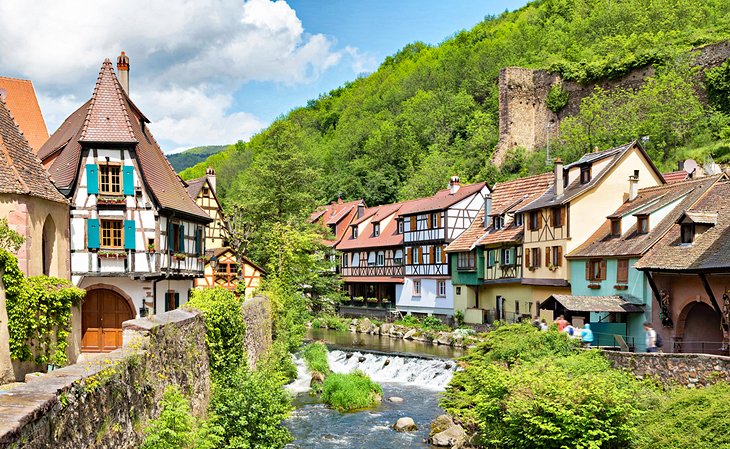
Ruins of an Old Imperial Castle provide a reminder of Kaysersberg's illustrious past as a Free Imperial City. With remnants of medieval walls, a Romanesque church (the Eglise Sainte-Croix), a 13th-century château, historic half-timbered houses, and Renaissance burghers' mansions, Kaysersberg has an appealing old-world ambience.
For those who want to experience the magic of Christmastime in Alsace, Kaysersberg should be at the top of a tour itinerary in December. Festive illuminations and old-fashioned holiday décor give the town an enchanting ambience during the season, which begins around November 25th and continues until the New Year.
The town's Marché de Noël (Christmas Market) draws many revelers because of its authentic décor and joyous atmosphere. Holiday shoppers appreciate the artisanal market, which features an assortment of craft vendors selling handmade items such as ceramics, jewelry, Christmas tree decorations, gingerbread, fruit jams, kougelhopf, and other seasonal specialties.
Ribeauvillé
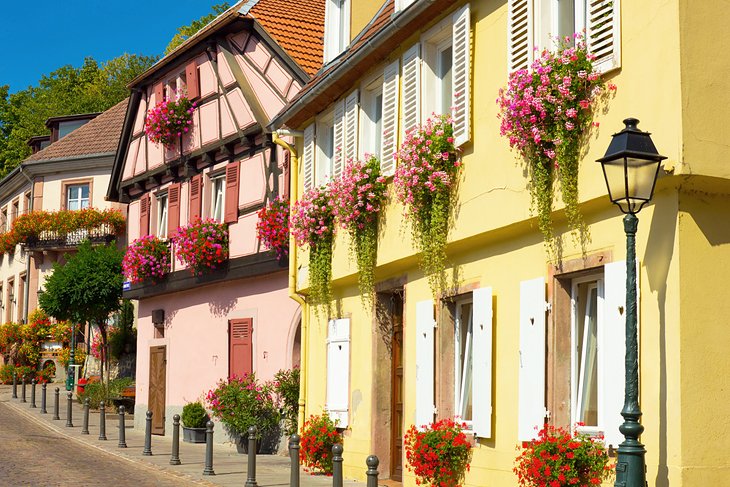
This pretty little village (only four kilometers from Riquewihr) literally blossoms with quaintness. During springtime and summer, potted flowers adorn the window sills of fetching historic houses, as well as public spaces such as fountains and statues.
Thanks to these exceptional floral displays, Ribeauvillé has been awarded the title of four-star "Village Fleuri"—the highest rating. The village's enchantment is further revealed in its atmospheric cobblestone streets and small squares.
To experience the medieval heritage of Ribeauvillé, you should arrive for Pfifferdaj (the Fiddlers' Festival) in September. During the Middle Ages, Ribeauvillé was ruled by the Count of Ribeaupierre, known as the "King" of the region's traveling musicians, who paid dues to him for his protection and gathered annually at Ribeauvillé for a minstrels' festival ("Pfifferdaj," which is still celebrated every year on the first Sunday in September).
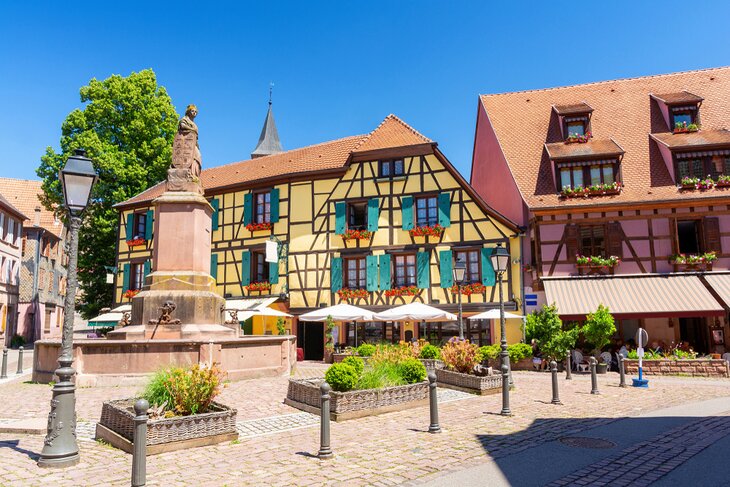
The medieval-themed festivities continue in Ribeauvillé with the Medieval Christmas Market in early December. Visitors are immersed in the magic of an old-fashioned Alsatian Christmas celebration, complete with market stalls that sell holiday decorations, artisanal items, and gourmet delicacies of the Middle Ages. Troubadours (singers, clowns, dancers) entertain the crowds, adding to the authentic ambience.
Other cultural events include the Kougelhopf Festival in early May (devoted to the special cake made with raisons and almonds) and the Festival de Musique Ancienne that presents a program of music concerts (focused on medieval, Renaissance, and Baroque music) from mid-September through early October.
Eguisheim
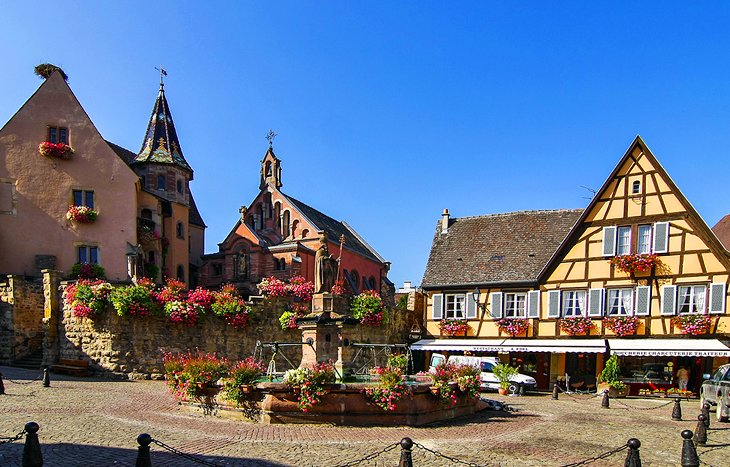
The typical Alsatian village of Eguisheim (five kilometers from Colmar) is nestled in a sunny valley surrounded by the vine-covered foothills of the Vosges Mountains.
Because of its beauty and charm, the village has earned many distinctions: It's one of France's "Plus Beaux Villages," as well as a winner of the "Grand Prix National du Fleurissement," France's most prestigious national floral award, and was voted the "village préféré des Français" (favorite village in France) in 2013.

The village is a cluster of enchanting cobblestone lanes that wind around in a concentric pattern, giving the feel of being in a fairy-tale world. Brightly painted half-timbered houses dating from the 16th and 17th centuries feature decorative windowsills bursting with colorful potted flowers.
Eguisheim's captivating ambience makes it one of Alsace's top destinations for Christmas. The village celebrates the season with a lively and beautifully decorated Marché de Noël (Christmas Market) in the Alsatian tradition. The Christmas market begins around November 25th and continues until the end of December.
Sélestat
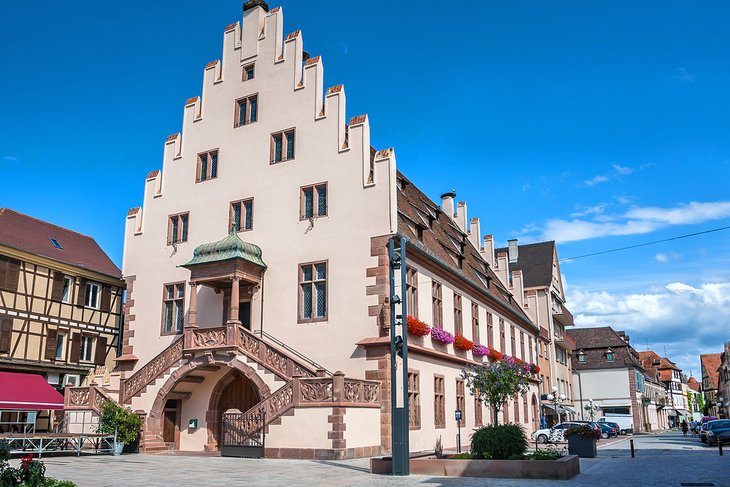
Sélestat boasts a rich cultural heritage, beginning as a Carolingian stronghold in the 8th century and then as a Free Imperial City of the Holy Roman Empire. The town is just a 35-minute drive (50 kilometers) from Strasbourg.
The city became a center of humanism in the 15th and 16th centuries and today is recognized as a "Ville d'Art et d'Histoire" (City of Art and History). As a testimony to its rich cultural heritage, Sélestat has a library that was founded in 1452, which possesses thousands of valuable manuscripts dating from the 7th to the 16th centuries.
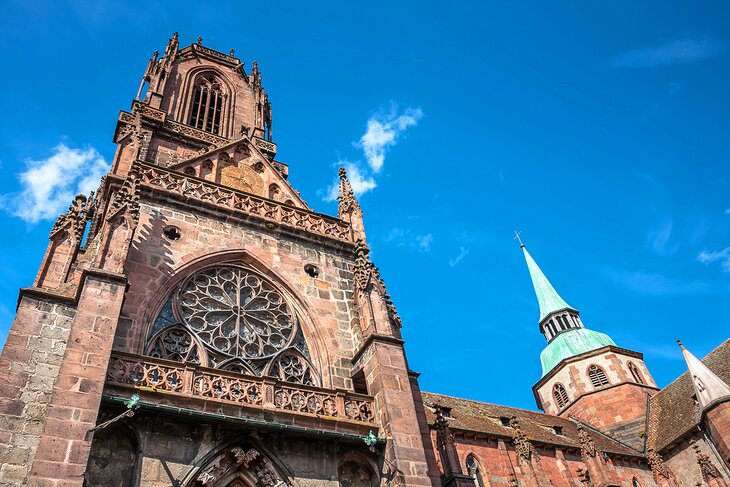
At the center of the town is the 18th-century Neoclassical Hôtel de Ville (Town Hall), and nearby are two outstanding churches: the three-towered Romanesque Eglise Sainte-Foy and the 13th-century Eglise Saint-Georges, featuring modern stained-glass windows by Max Ingrand.
One of the most amusing things to do in Sélestat is visit the Maison du Pain d'Alsace (7 Rue du Sel), a museum and working bakery dedicated to the art and techniques of Alsatian baking. Visitors can watch the bakers create local specialities (and later sample some at the coffeeshop) such as pretzels, kougelhopf, brioche, bredele (Christmas cookies), and a wide variety of breads.
Vallée de Munster
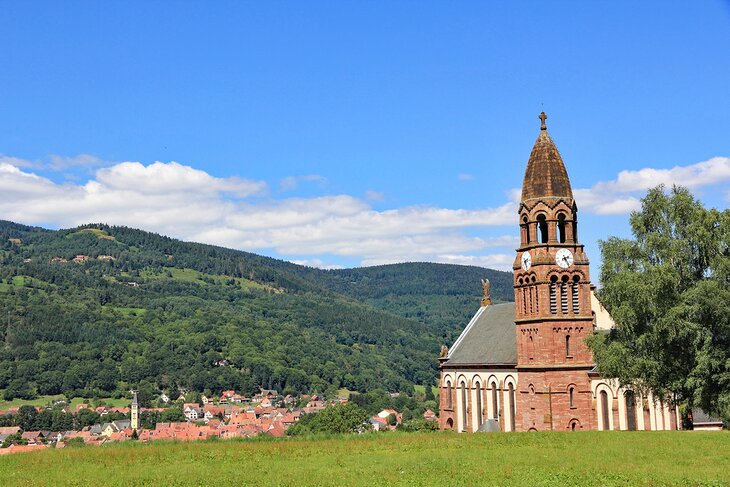
Famous for its cheese, the Valley of Munster is a great starting point to explore the "Route du Fromage" (Cheese Trail). Visitors can begin this gourmet experience by sampling cheeses at La Maison du Fromage (a museum devoted to cheese) and at farmhouse inns.
Gastronomes will appreciate the region's cozy restaurants, which specialize in the regional cuisine (renowned for its hearty dishes). Local specialties include Fleischkiechles (ground meat patties), Baeckeoffe (meat stew topped with sliced potatoes), trout in a special sauce, and Tartes Flambées (Alsatian-style pizza made with cream and Emmental cheese).
Traditional markets are a hallmark of the region's authentic cuisine. An outdoor farmers market takes place at the Place du Marché in Munster on Tuesday and Saturday mornings. Vendors sell cheese, meats, regional culinary specialties (such as sausage sandwiches), and clothing, as well as locally grown fruits, vegetables, and herbs.
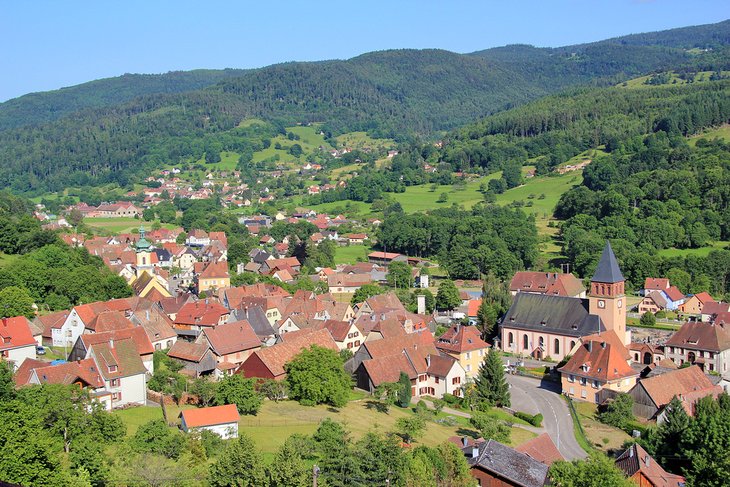
In the town of Muhlbach-sur-Munster (five kilometers from Munster), vendors come to the Marché du Terroir (Market of the Terroir) on Sunday mornings from early July through mid-September at the Place du Weier to sell bread, cheese, and other produits du terroir (regional food products).
For those exploring the Alsace region, the Münster Valley is an excellent base for taking excursions to the villages around the Vosges Mountains such as Eguisheim (20 kilometers away), Hattstatt (25 kilometers away), and Rouffach (30 kilometers away). The cities of Turckheim and Colmar are both within a 30-minute drive.
Dambach-la-Ville
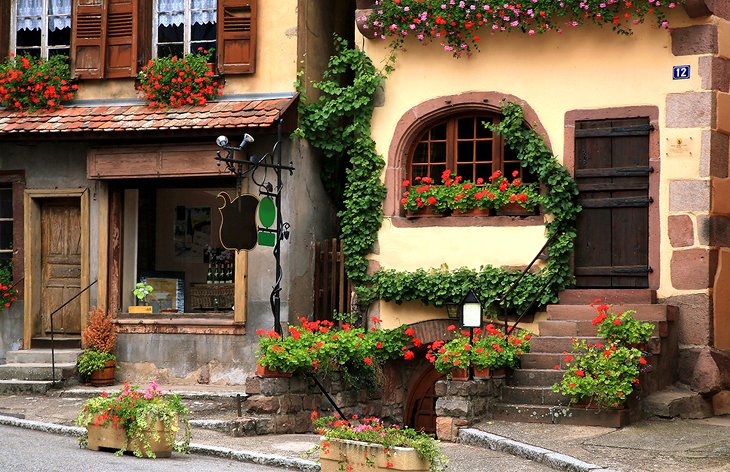
This medieval walled town is surrounded by a dreamy landscape of vine-covered, rolling hills. The gorgeous natural backdrop is the perfect juxtaposition for the town's brightly painted half-timbered houses. Visitors will enjoy discovering the beauty of Dambach-la-Ville, while wandering through a maze of winding cobblestone streets.
To continue the scenic strolls, travelers need only venture just outside Dambach-la-Ville, where there are many hiking trails through the countryside.
Other excursions include the nearby village of Epfig (eight kilometers away), nestled in an idyllic spot surrounded by vine-covered foothills. The village has a rare Romanesque chapel that dates back to the 11th century, the Chapelle Sainte-Marguerite.
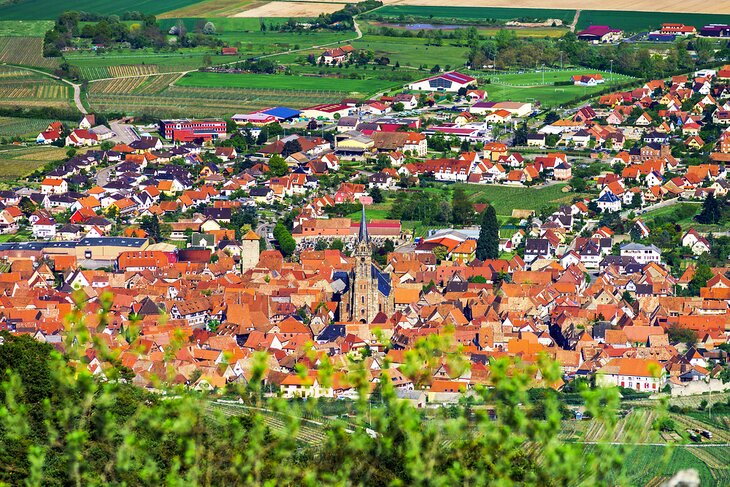
Dambach-la-Ville is a delightful place to visit during the Fête de la Myrtille (Blueberry Festival) that is held every two years in July. This lively festival attracts crowds who come to sample the fresh blueberries and handcrafted blueberry pies, tarts, and juices.
Another festive occasion is the Marché de Noël every year in early December, which brings Christmas spirit to the town with live music concerts and an old-fashioned artisanal market. At dozens of stalls set up outside at the Place du Marché and inside at the Town Hall and in the Salle de la Laube, vendors sell unique Christmastime decorations and gift items.
Rosheim
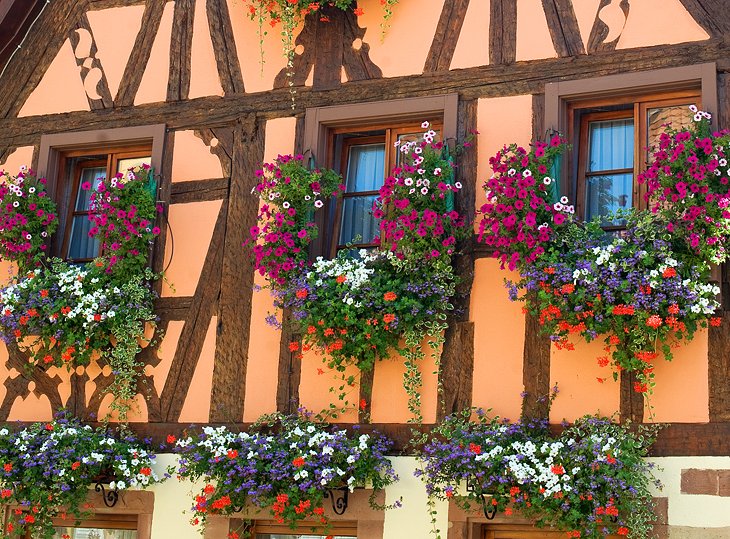
Picturesque vine-covered hills envelope this lovely small town, which has many flower-bedecked half-timbered houses. The surrounding Pays du Mont Sainte-Odile (countryside of Mount Sainte-Odile) features scenic walking and hiking trails that draw many visitors from springtime through autumn.
Only six kilometers from Obernai, this historic town was another Free Imperial City of the Holy Roman Empire. The town's heritage is revealed in the vestiges of its past: medieval walls with gated towers and one of the finest Romanesque churches in Alsace, the 12th-century Eglise Saint-Pierre-et-Saint-Paul, which is renowned for its ornate sculpted decorations.
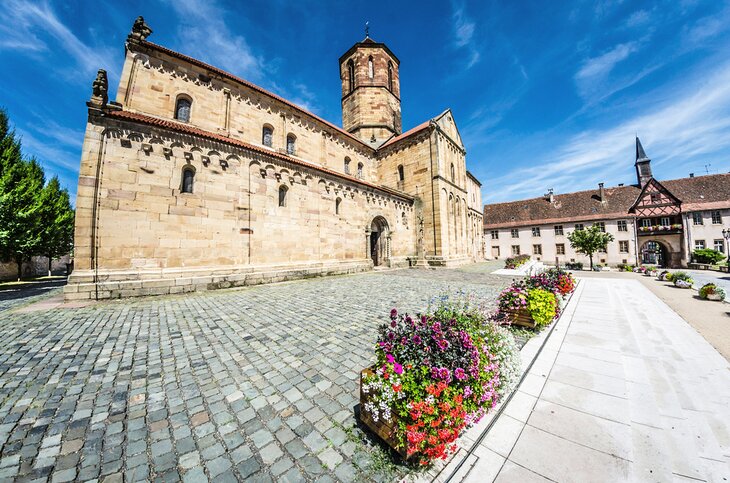
Equally intriguing, the town has evidence of a Jewish community dating back to 1215. Although the 19th-century Jewish synagogue is now closed, tourists can still appreciate its neo-Romanesque façade.
Molsheim
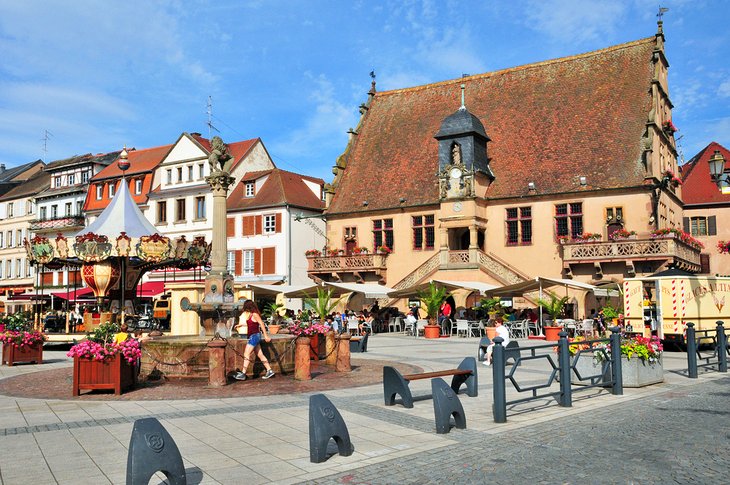
Within a maze of cobblestone streets, the medieval town of Molsheim boasts wonderfully preserved old houses and historic monuments.
Visitors should begin a tour at the town's Place du Marché (the old market square) and then walk a few blocks to the Place de l'Hôtel de Ville to see the 16th-century "La Metzig" (Butchers' Guild House). The rez-de-chaussée (street level) of La Metzig is now a restaurant that serves authentic Alsatian cuisine.
On the outskirts of the town is the Eglise des Jésuites built in 1617. This monumental church is one of the finest examples of Jesuit architecture in Alsace.
Turckheim
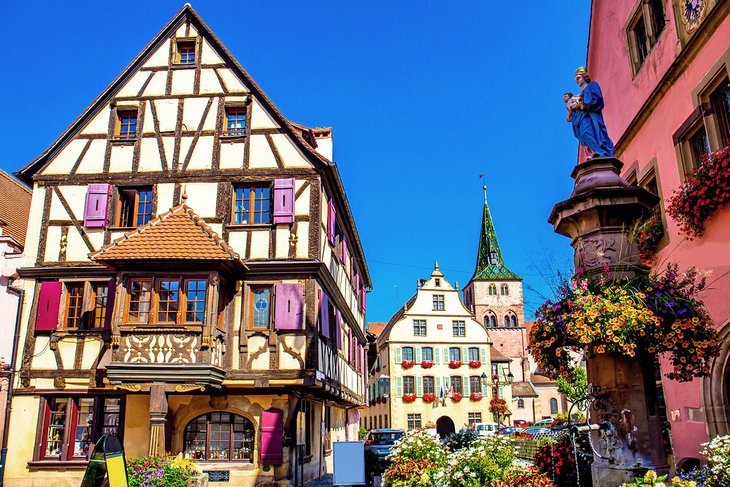
Found in the verdant Münster Valley, just six kilometers from Colmar, Turckheim is layered in history. Visitors enter the town through its medieval gates, relics of the ancient ramparts: the 14th-century Porte de France, the Porte de Munster, and the Porte du Brand.
Other well-preserved monuments tell more of the city's story. The Romanesque Eglise Sainte-Anne dates to the 12th century. The 16th-century Corps de Garde was an assembly room used by the town's guilds, while the 17th-century Hôtel de Ville (Town Hall) served as the Court of Justice when Turckheim was an Imperial City (from the 14th to 17th centuries).
Turckheim hosts several events throughout the year, such as an Easter celebration and the Trois-Epis car race.
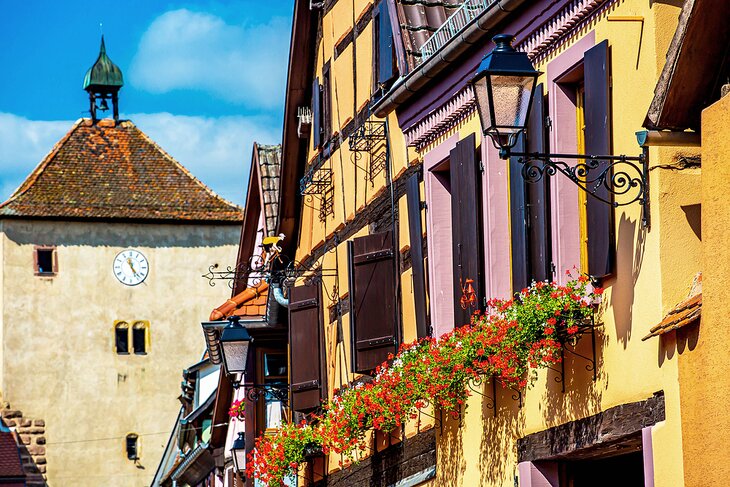
The village is also famous for its Marché de Noël (Christmas festivities, from November 25th through December 30th), which include an Advent Calendar ritual at the Town Hall with candle lightings. There are Christmas carols, an exhibition of antique toys, and charming chalets where vendors sell regional holiday specialties such as Wiehnachts Bredele (Christmas cakes) and artisanally crafted items for gift-giving.
A highlight of Christmastime in Turckheim is the Village des Lutins, a Christmas village of tiny houses (shops) created by local artisans, who present their arts and crafts. Every night, holiday gifts and treats such as cupcakes are distributed.
Andlau
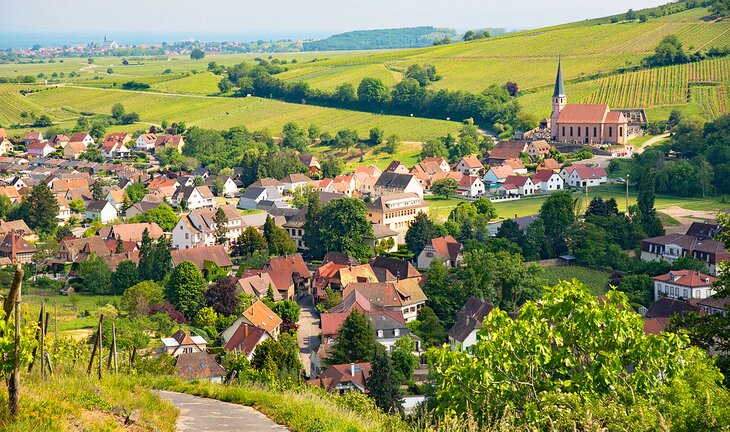
Andlau is a quaint village in a tranquil valley near the forests of the Vosges foothills, where bears once roamed in abundance. The bear is a symbol of the village and also has a Christian significance in Andlau.
According to local legend, a bear indicated to Saint Richard where to build the abbey of Andlau in the 9th century. This explains why bears make an appearance at the Eglise Abbatiale Saints-Pierre-et-Paul. The church crypt is guarded by a bear carved from stone, and a small bear is found in the intricate bas-reliefs on the exterior.
Other whimsical bear sculptures decorate public spaces throughout the town.
Mittelbergheim

At the foot of Mount Saint Odile in a ravishing landscape of vine-covered fields, Mittelbergheim is one of the "Plus Beaux Villages de France." This delightful village (three kilometers from Andlau) has a remarkable unity of architectural style, with most buildings dating to the 17th and 18th centuries.
Mittelbergheim is also renowned for its gastronomy. Many of the village's restaurants offer specialties of the region, prepared with fresh ingredients from local markets.
During the period of Advent, the town celebrates the season with an event called "Bredelmarik," a market devoted to traditional Alsatian Christmas cakes and cookies. The market takes its name from the word "bredele," which describes a variety of Christmas cookies ranging from vanilla butter cookies and gingerbread to meringues and hazelnut cookies.
The countryside surrounding Mittelbergheim is ideal for taking walks. Several trails outside the village afford wonderful views of the idyllic scenery. With its slow-paced country feel, Mittelbergheim is a good place to relax, appreciate nature, and experience the joie de vivre of Alsace.
Guebwiller
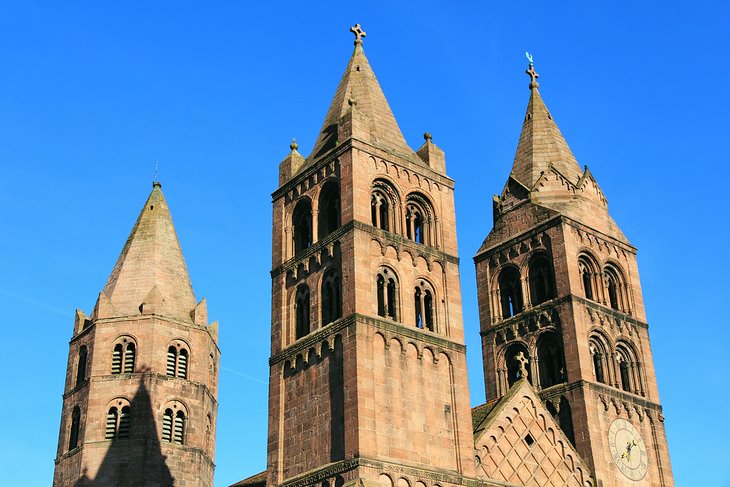
The attractive and cultured town of Guebwiller stands at the foot of the "Grand Ballon," the highest summit of the Vosges Mountains.
Guebwiller is recognized as a "Ville d'Art et d'Histoire" because of its architectural treasures, including the Romanesque Eglise Saint-Léger; the 11th-century Eglise Saint-Michel; and the 14th-century Couvent de Saint Dominique, originally a monastery of the Dominicains de Haute-Alsace, which has been transformed into a performance venue for music concerts.
For those who enjoy hiking and other outdoor activities, it's worth exploring the rural area outside of Guebwiller in the Vosges Mountains. In this pristine countryside, there is a wide selection of hotels and inns that offer an escape to nature.
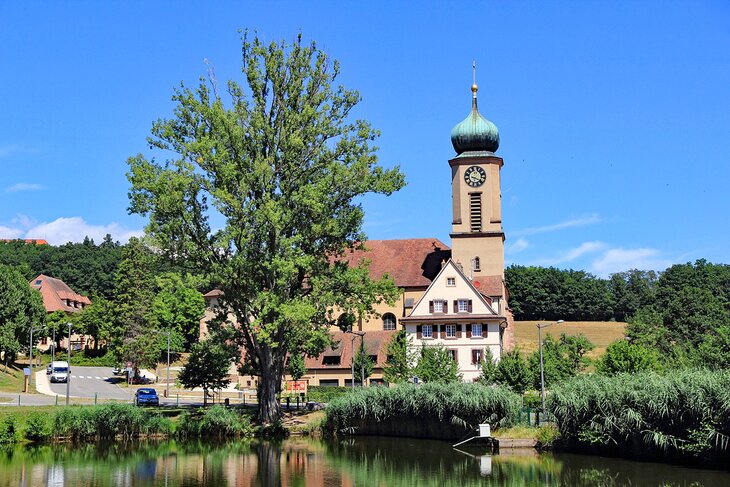
Other nearby attractions include the Renaissance houses in Soultz (four kilometers away) and the Basilique de Thierenbach in Jungholtz (six kilometers away), a lavish Baroque church that is a pilgrimage destination devoted to the Virgin Mary.
Bergheim
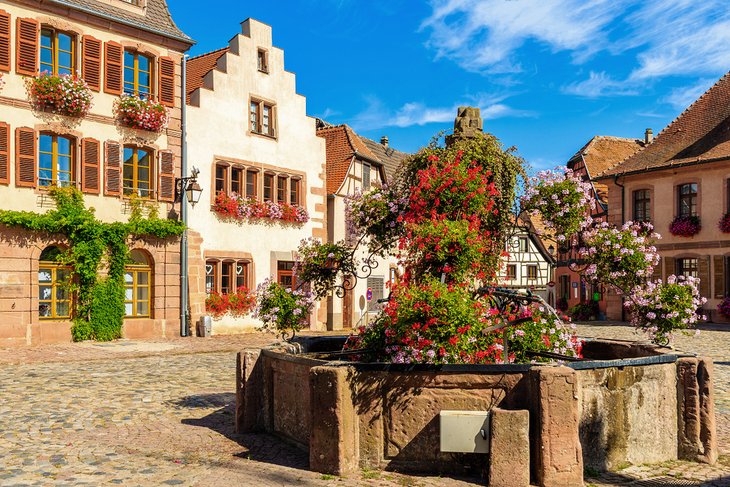
Sheltered by the rolling foothills of the Vosges Mountains, this walled medieval village is one of the few Alsatian towns with its fortifications from the Middle Ages (built in 1311) still completely intact.
Tourists will enjoy meandering through the village's winding lanes; walking along the ramparts; and visiting the Jardin d'Aneth, a medieval garden where berries and medicinal plants are grown.
A tour of the village should also include the Place du Marché to admire the fountain featuring the village's coat of arms, the Grand Rue lined with handsome flower-bedecked houses, and the Eglise Notre-Dame de l'Assomption (parish church).
Hunawihr
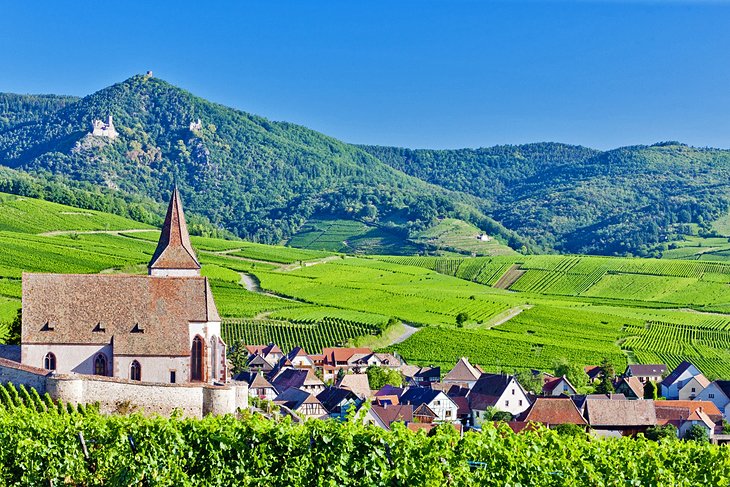
The beauty and romance of Hunawihr has earned it a place on the list of "Les Plus Beaux Villages de France." Surrounded by vine-covered hills and woodlands, this winsome country hamlet features quiet streets lined with floral-adorned half-timbered houses.
Besides its pastoral charm, Hunawihr has a few unique tourist attractions: the Butterfly Garden, which allows exotic butterflies to flourish in greenhouses that replicate natural habitats; and the NaturOparC Stork Reintroduction Center, which reintroduces native storks into the wild to help this endangered species survive.
The village also has a fortified church, the 15th- to 16th-century Eglise Saint-Jacques le Majeur, where villagers took refuge in times of invasion. This monument is a rare example of defensive religious architecture.
Other Places of Interest
Château du Haut-Koenigsbourg
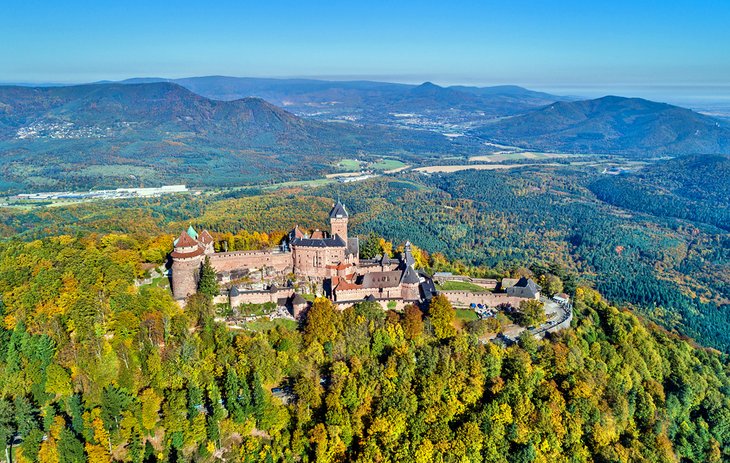
This breathtaking castle (15 kilometers from Ribeauvillé and 10 kilometers from Bergheim) is an important symbol of the Alsatian heritage. Like many medieval fortresses, the majestic Château du Haut-Koenigsbourg is located at an impressive height.
On a rocky promontory more than 700 meters high, the fortress was strategically situated for observing the landscape and providing defense in case of invaders. Since the castle was built in the 12th century by the Hohenstaufens, this amazing monument has witnessed the course of European history.
From 1900 to 1908, the Château du Haut-Koenigsbourg was restored to its original splendor. The spectacular renovated castle is a joy to explore. Visitors circle through the spiral stairways that lead to the fully furnished living quarters.
Other noteworthy aspects are the drawbridges, armory, and cannons, which recall the fortress' military purpose. From the Grand Bastion artillery platform, visitors can take in exhilarating panoramas that encompass the plains of Alsace, the Vosges Mountains, and the Black Forest.
The castle also has a Medieval Garden planted with flowers, plants, and medicinal herbs used during the Middle Ages.
Official site: http://www.haut-koenigsbourg.fr/en/
Mont Sainte-Odile
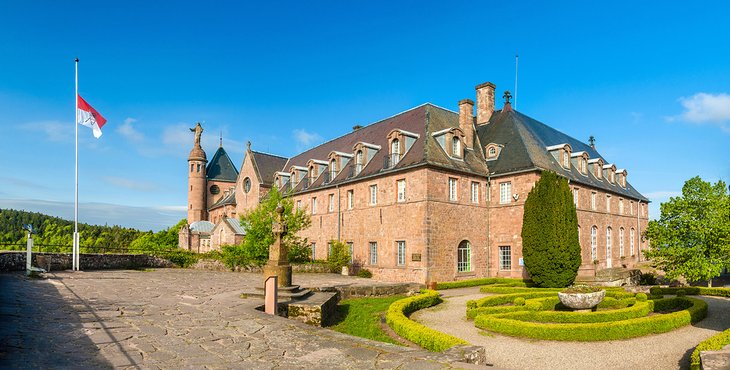
One of the spiritual highlights of a tour through the Vosges Mountains, the Mont Saint-Odile (12 kilometers from Mittelbergheim) is an emblematic Catholic monument of Alsace. This pilgrimage site attracts both religious pilgrims who come to pray, as well as visitors who come to simply experience the beauty and serenity of the setting.
Located on a wooded ridge at 753 meters above the surrounding countryside, Mont Sainte-Odile offers a peaceful natural environment and awe-inspiring views. Besides being a working monastery, Mont Sainte-Odile is also a tourist destination with accommodations and dining options at the Hôtel-Restaurant Mont Sainte-Odile.
The Mont Sainte-Odile convent is surrounded by ten kilometers of a prehistoric defensive wall known as the Mur Païen (Heathens' Wall). The two-meter-thick wall stands to a height of around six meters high. On the summit of a hill (at 511 meters) outside the modern convent is the site of the original convent of Sainte-Odile, which was destroyed in a fire in 1546.
Neuf-Brisach
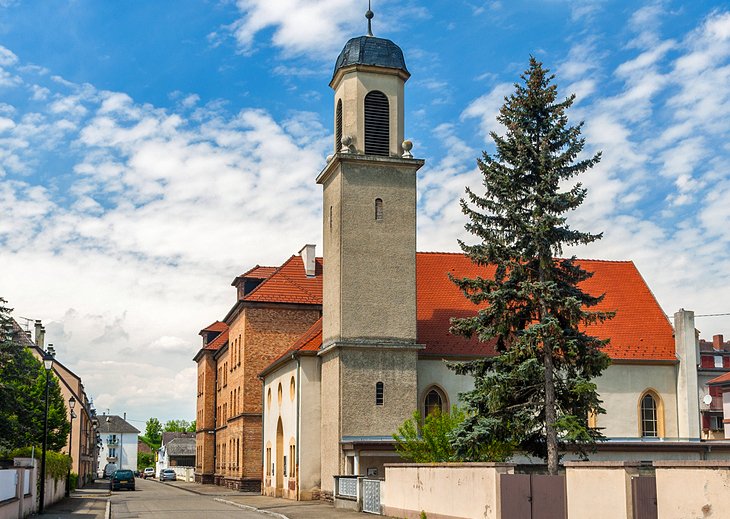
This unique fortified citadel is situated in the Alsace plain on the Route Verte (Green Route), which leads to Germany's Black Forest. Because of its exceptional historical and cultural value, Neuf-Brisach is listed as a UNESCO World Heritage Site.
Built in 1699 as a citadel for King Louis XIV (the Sun King), Neuf-Brisach features architecture never before seen in Europe, and is considered a masterpiece of Vauban. The citadel's pure lines and 48 quarters form a perfect octagon, an astounding architectural accomplishment.


